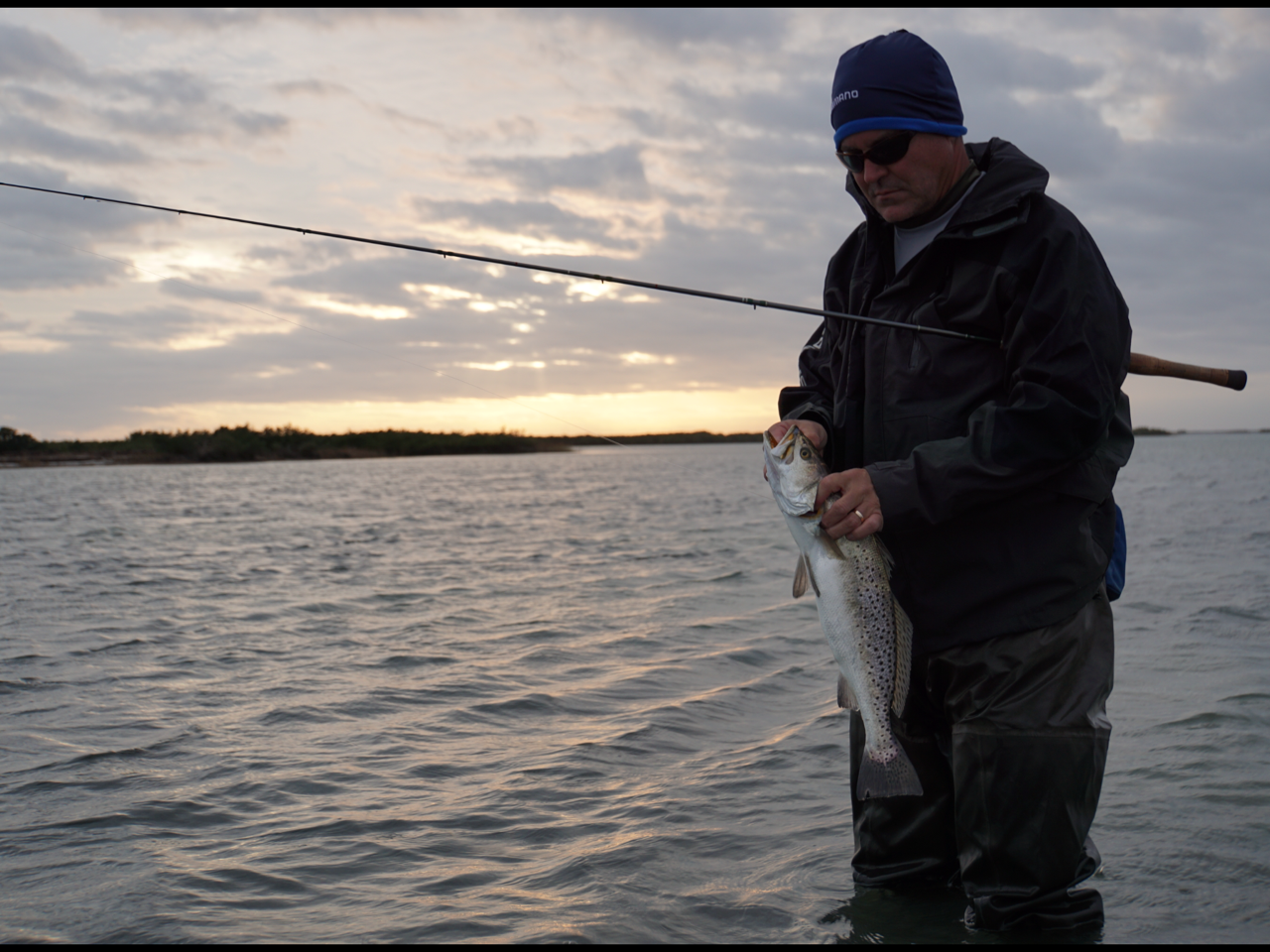
Gone are the days when Texas bays closed shop for the holiday season. Unbelievably, there was a time just a couple of decades ago when winter wadefishing was a solitary pursuit enjoyed by an elite group of purists. They were often alone on winter shorelines and were the eclectic few who got to fish one of the best seasons on the bays and flats of the Texas coast. The secret is now irrevocably out, but the fishing can still be some of the best of the year. By keeping an eye on the weather and following a few basic strategies, your next winter wade might deliver your best gift of the season.
Gear Matters
Proper clothing always matters in wadefishing, but along the Texas coast, you have to be particularly adaptable. The conditions can turn from humid and hot to a searingly cold northwest wind and then settle into a soaking dense fog….in a day. It can literally be that schizophrenic. With that in mind, gear is paramount not only for safety but also for enjoyment of your trip. Remember to bring multiple layers on every trip and not just layers for addressing cold conditions, but also to adjust if a front backs up and produces heat, humidity, fog, rain or all of the above. The best news is that outerwear and wader technology have evolved dramatically in recent years.
Not that many years ago, I clearly remember proudly donning my neoprene bratwurst skin waders for a day of overheated misery while wading a shoreline with the brutal combination of cold water and a searing sun. I never knew how bad I had it until I got my first pair of breathable waders. They are a must. The thin, playable skin provides room for proper layering underneath, and allows you to actually be nimble in and out of the water. A basic rule is to always overpack for any winter trip and you will never be sorry.
No Bait Doesn’t Mean No Bait
The first rule of trout and redfish fishing along the Texas coast (and actually any coast for that matter) is the importance of there being baitfish. No bait, no fish. It is almost that simple. But, during the cold water periods of late fall and winter, a lack of visible bait does not mean that it is not present. Keep a keen eye out for subtle signs of mullet or other cold water prey species, and be particularly aware of cormorants, loons and pelicans. Honestly, my favorite winter sign on a cold, seemingly lifeless shoreline is a pod of white pelicans crouched low to the water in a full stalk. They ease along and look for cold-slowed mullet which is exactly the same prey a large speckled trout targets. Equally significant, diving loons or cormorants provide an almost sure sign that there are some minnows or other small finfish in the area, and during winter, any secondary sign of bait is also a sign of trout and redfish.
When Water Clarity is a Problem
Cold water temperatures invariably bring clearer water than any other time of the year. At first appearance, that would seem to be a positive for a winter wader, but in reality, the opposite is often the case. Air clear water can be the mark of desolate water as bait and predator species scatter and an angler is left with a beautiful wade in an empty aquarium.
It can be maddeningly hard to find streaky or even milky water, but time spent searching is often worth the effort. Additionally, focusing on areas that hold a softer bay bottom, and particularly near bayou outlets, bring the combination of a warmer muddy bay floor and marsh-fed flow from the bayou mouth to create natural turbidity and near-perfect ambush points.
Grind It Out
Cold water brings lower metabolic conditions for baitfish and gamefish, so patience can be imperative. Unlike the frothy days of summer and fall when fish feed regularly and are measurably more active, the cold of winter brings sluggish behavior and feeding patterns to match. There is never a season that putting in extras hours does not pay off, and none more so that winter. But, by keeping an eye on the weather, properly preparing and putting in the hours, this holiday season may deliver the best wade of your year.
